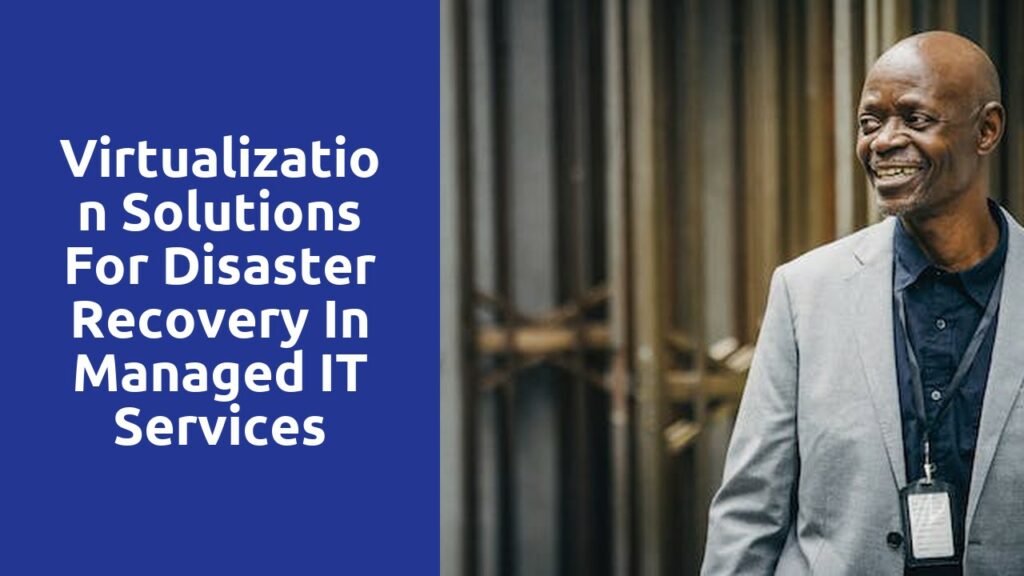Exploring the Challenges Faced in Traditional Disaster Recovery Approaches
Organizations facing the aftermath of a disaster often rely on traditional disaster recovery approaches to regain normalcy. However, these approaches present a myriad of challenges that need to be explored. One of the key challenges is the time it takes for these approaches to be executed. Traditional disaster recovery methods involve the manual restoration of systems and data, which can be a time-consuming process. This delay further exacerbates the impact of the disaster, prolonging the disruption and hindering the organization’s recovery efforts.
Another significant challenge is the lack of flexibility in traditional disaster recovery approaches. These methods are often rigid and linear, making it difficult to adapt to the dynamic nature of disasters. This lack of agility poses a serious problem, as it limits the ability of organizations to respond effectively and efficiently to the changing circumstances. Moreover, traditional approaches often focus solely on restoring operations without adequate consideration for the evolving needs and priorities of the affected stakeholders.
These challenges highlight the need for organizations to re-evaluate their traditional disaster recovery approaches. In order to overcome the limitations posed by these methods, organizations must embrace innovative solutions that offer faster recovery times, greater flexibility, and a comprehensive approach that considers the needs of all stakeholders. By doing so, organizations can navigate through the complexities of disaster recovery more effectively, minimizing the impact of disasters and rebuilding with resilience.
Introducing Virtualization as a Game-Changer in Disaster Recovery
As companies continue to navigate the ever-evolving landscape of technology and data management, the need for effective disaster recovery strategies becomes increasingly crucial. In recent years, virtualization has emerged as a game-changing solution in this realm, offering numerous benefits and opportunities for businesses of all sizes. By leveraging virtualization technology, organizations can enhance their disaster recovery capabilities, improving efficiency, cost-effectiveness, and overall resilience.
One significant advantage of virtualization in disaster recovery is the ability to decouple applications and data from physical hardware. Traditionally, disaster recovery involved the replication of physical servers and their associated configurations, resulting in a lengthy and complex process. With virtualization, however, businesses can create virtual machines that mimic physical servers and store them on a centralized host. This virtual infrastructure allows for easier replication and recovery, minimizing downtime and reducing the risks associated with hardware dependencies. Additionally, virtual machines can be easily scaled up or down as needed, providing flexibility to adapt to changing business needs.
Benefits of Virtualization Solutions for Disaster Recovery in Managed IT Services
Virtualization solutions offer numerous benefits for disaster recovery in managed IT services. One of the primary advantages is the ability to rapidly and efficiently restore critical systems and applications in case of a disaster. With virtualization, it is possible to create copies or replicas of virtual machines, allowing for quick and seamless recovery. This means that in the event of a natural disaster, power outage, or any other unforeseen event, businesses can minimize downtime and prevent significant financial losses.
Another significant benefit of virtualization solutions for disaster recovery is the cost-effectiveness it brings to managed IT services. Traditionally, disaster recovery systems required dedicated hardware, which could be both expensive and difficult to manage. However, virtualization enables businesses to utilize existing resources more efficiently, resulting in cost savings. Additionally, virtualization allows for easier scalability, as virtual machines can be easily replicated or relocated to other physical servers as needed. This flexibility ensures that businesses can adapt to changing demands without incurring additional infrastructure costs. Overall, virtualization solutions are a crucial component of disaster recovery planning in managed IT services, providing both reliability and cost-effectiveness.
Key Considerations when Implementing Virtualization for Disaster Recovery
One of the key considerations when implementing virtualization for disaster recovery is ensuring proper backup and recovery procedures. With virtualization, it is essential to have a backup plan in place that includes regular backups of all virtual machines and their associated data. This includes not only the virtual machine files themselves, but also any configuration settings and data residing within the virtual machine. The backup process should be automated and scheduled, ensuring that all necessary data is backed up regularly without manual intervention.
Additionally, it is important to consider the scalability and flexibility of the virtualization solution for disaster recovery purposes. As organizations grow and change, their disaster recovery needs may also evolve. Therefore, it is crucial to select a virtualization platform that can easily accommodate the changing needs of the business. This includes the ability to add and remove virtual machines as required, as well as the ability to scale resources such as storage and processing power. By implementing a scalable and flexible virtualization solution for disaster recovery, organizations can ensure that their infrastructure is ready to handle any unforeseen events or disasters.
Examining Different Virtualization Technologies for Disaster Recovery
Introduction to Virtualization Technologies for Disaster Recovery
Virtualization technologies have become increasingly popular in the field of disaster recovery, providing organizations with efficient and cost-effective solutions to protect critical data and applications. These technologies allow for the replication and recovery of virtual machines (VMs) and their associated data in the event of a disaster, minimizing downtime and ensuring business continuity. In this article, we will examine two main virtualization technologies that have emerged as prominent solutions for disaster recovery: full system virtualization and application-level virtualization.
Full system virtualization involves creating a complete abstraction of the underlying physical hardware, allowing multiple VMs to run on a single physical server. This technology enables organizations to replicate and recover entire VMs, including the operating system, applications, and data, in case of a disaster. Platforms such as VMware ESXi and Microsoft Hyper-V provide robust tools for managing and automating the replication process, making it seamless and efficient. Furthermore, full system virtualization offers the flexibility to run VMs on different hardware configurations, enabling organizations to easily migrate and scale their infrastructure to meet changing requirements.
On the other hand, application-level virtualization focuses on isolating and virtualizing individual applications, allowing them to run in their own virtual environments. This technology separates the application from the underlying operating system and hardware, making it easier to replicate and recover specific applications in the event of a disaster. With application-level virtualization solutions like Docker and Kubernetes, organizations can package applications with their dependencies into containers that can be easily moved across different environments and platforms. This flexibility enables efficient disaster recovery strategies, as only the affected applications need to be replicated and recovered, minimizing downtime and resource utilization.
As organizations continue to prioritize disaster recovery and business continuity, virtualization technologies offer compelling solutions to ensure data and application availability. By leveraging full system or application-level virtualization, organizations can replicate and recover their critical resources quickly and efficiently, minimizing the impact of disasters. In the following sections of this article, we will delve deeper into the benefits, challenges, and considerations of each virtualization technology to help organizations make informed decisions for their disaster recovery strategies.
Best Practices for Implementing Virtualization Solutions in Disaster Recovery Plans
Virtualization solutions have become increasingly popular in disaster recovery plans due to their numerous benefits. One best practice for implementing virtualization solutions is to conduct a thorough assessment of your infrastructure. Before virtualizing your systems, it is essential to evaluate your current hardware, software, and network capabilities to ensure they can support the virtualized environment effectively. This assessment will help identify any potential bottlenecks or limitations that may affect the performance of your virtualized systems.
Another best practice is to prioritize your critical applications and data. Not all systems and data are created equal, and it is vital to determine which ones are mission-critical to your business operations. By prioritizing your applications and data, you can allocate the necessary resources and establish appropriate recovery time objectives (RTOs) and recovery point objectives (RPOs) for each. This process will enable you to focus your efforts and resources on recovering the most critical components of your infrastructure first, minimizing downtime, and ensuring business continuity.
Related Links
Virtualization Solutions for Disaster Recovery in Managed IT Services
Virtualization Management Best Practices for Managed IT Services

